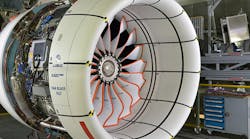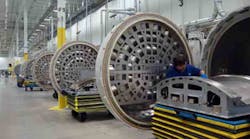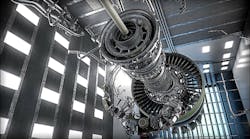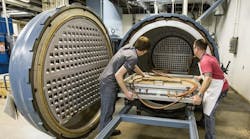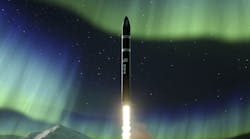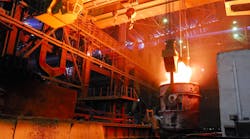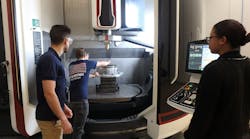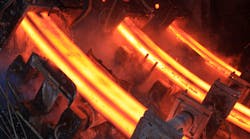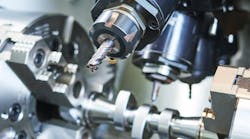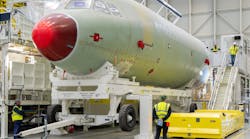GE Aviation broke ground in Huntsville, Ala., on two adjacent factories to mass-produce silicon carbide (SiC) materials, to be used to manufacture ceramic matrix composite components (CMCs) for jet engines and land-based gas turbines for electric power. The plants, announced last fall, represent an investment of more than $200 million by the jet-engine manufacturer, which noted they will employ up to 300 people and are expected to be complete in the first half of 2018.
One plant will produce SiC ceramic fiber, the first operation to do this in the U.S. The second will use these SiC ceramic fibers to produce unidirectional CMC tape required to fabricate CMC components.
"GE Aviation is creating a fully integrated supply chain for producing CMC components in large volume, which is unique to the United States," stated vice president Sanjay Correa. Correa called the two plants “vital to that effort.
CMCs are formed with silicon-carbide (SiC) ceramic fibers in a SiC matrix, and then coated with proprietary ceramic material. GE’s Global Research Centers and industrial businesses have been developing commercial applications for CMCs for over two decades.
GE’s jet engine-building business has called ceramic matrix composites “a critical pathway on GE Aviation’s technology roadmap,” principally because of the “ultra lightweight” and heat-resistant potential: they are one-third as dense as metal alloys, bringing valuable weight reduction that adds to aircraft fuel efficiency, and the heat-resistance is seen as enhancing engine performance, durability, and fuel economy.
CMCs already form some critical elements of jet engine designs: CFM International’s high-bypass turbofan LEAP engines, being developed by GE Aviation’s joint-venture CFM International, is the first commercial jet engine to use CMCs in the high-pressure turbine section. There are over 10,500 orders and commitments for LEAP engines, which are on track to power the new Airbus A320neo and Boeing 737 MAX aircraft.
“Since CMCs are far more heat-resistant than metal alloys, they require less cooling air in the engine’s hot section. This air instead can be used in the engine flow path, enabling it to run more efficiently,” according to GE Aviation — which called the successful hot-section application for CMCs “a breakthrough” for the jet propulsion.
The new plants will fulfill GE Aviation’s domestic requirements for CMC materials, for commercial and government aircraft programs, and also support demand for jet engines and gas turbines worldwide.
